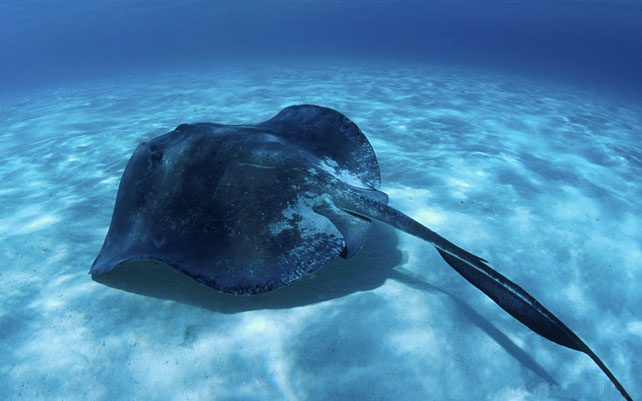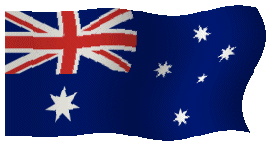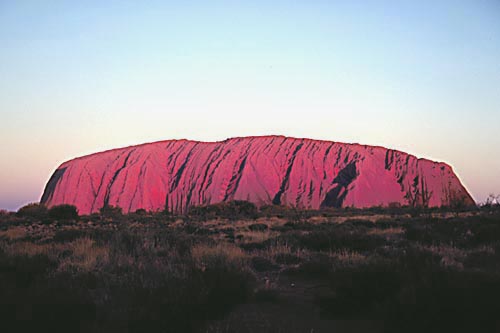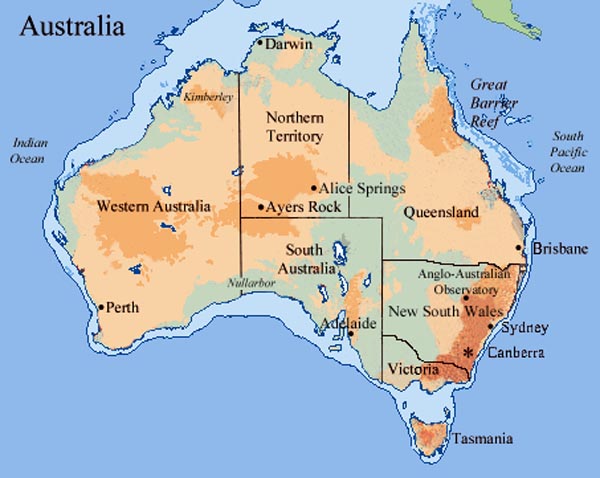|
Uluru or Ayers Rock in Central
Australia
Introduction
Australia, "the Land of Oz" is a country of antithesis. While it is the
world's smallest continent, it is also the sixth-largest country and a
very large island. The vast majority of the nation is a barren dull
desert, but its coasts can be green and the northeast is tropical. It is
one of the world's most urbanized countries, with most of the population
living in the 10 largest coastal cities, yet the majority of the country
(the outback) is almost devoid of people. Australia has some of the most
violent and noxious animals in the world like man-eating sharks,
crocodiles, venomous snakes and the most poisonous and aggressive spiders
on earth. In contrast it has the lovable Koala and the friendliest
people anywhere -- the Aussies.
Statistics
Country name:
Commonwealth of Australia
Area:
7,686,850 sq km , slightly smaller than the US, smallest of the seven
continents
Terrain:
Mostly low plateau with deserts; fertile plain in southeast. Only 6% is
arable.
Elevation extremes:
lowest point: Lake Eyre -15 meters
highest point: Mount Kosciuszko 2,229 meters
Coastline:
25,760 km
Climate:
generally arid to semiarid; temperate in south and east; tropical in north
Natural resources:
bauxite, coal, iron ore, copper, tin, silver, uranium, nickel, tungsten,
mineral sands, lead, zinc,
diamonds, natural gas, petroleum
Population:
approx. 19 million
Ethnic groups:
Caucasian 92%, Asian 7%, aboriginal and other 1%
Religions:
Anglican 26.1%, Roman Catholic 26%, other Christian 24.3%,
non-Christian 11%
Languages:
English, native aboriginal languages
Government type:
democratic, federal-state system recognizing the British monarch as
sovereign
Capital:
Canberra
Dangerous Australian Animals
While Australia has some of the nicest people in the world, it is far from
safe when it comes to other animals. Besides those sharks and nasty
crocodiles, Australia is home to the ten most lethal snakes in the world.
Sturan Sutherland reckons that of the world's top 25 venomous snakes,
Australia has 21. And then there are those poisonous spiders. If you
thought that the cities would be safe you are mistaken as Sydney is home
to the funnel web spider, Atrax robustus. The male of this species is one
of the most dangerous and aggressive spiders in the world, and is capable
of causing death in as little as 15 minutes. The Sydney funnel web is a
large, black spider with large powerful fangs. It lives in burrows or
crevices in rocks or around house foundations, lining the burrows with
silk. Colonies of more than 100 spiders may be found. The male spiders in
particular tend to wander into houses in the summer, especially in wet
weather. It should also be noted that the venom appears to particularly
affect primates.
Stingrays
On
September 3, 2006 while filming a
documentary, Steve “Crocodile Hunter” Irwin was murdered off the coast of
the most dangerous continent in the world – Australia. Not only does
Australia have the most venomous snakes, spiders and snails in the world,
but now one must add stingrays to the long list of man-killing animals.
Mr. Irwin was stung in the heart by a stingray's sharp, toxin-filled barbs
while swimming in the Great Barrier Reef off the coast of Cairns,
Australia. Paramedics were helicoptered in, but it was too late. Doctors
believe Irwin likely died instantly.
 |
|
Australia, about the size of the U.S.A.,
is the only nation to occupy an entire continent. Its terrain is the
flattest and (after Antarctica) driest of continents. While the majority
of the land is desert, there are rainforests and vast plains in the north,
snowfields in the south east, and fertile croplands in the east, south and
south west. About one third of the country lies in the tropics.
It is 4,000 km. from the east to west coast and 3,200 km. from north to
south. The continent-long Great Dividing Range runs north-south down the
eastern seaboard, separating the coastal plain from the drier inland
areas. Most of the population is concentrated in this zone. The Great
Barrier Reef lies between 50 - 300 km off the central and northern eastern
Australian coast. It extends for nearly 2000 km from the Torres Strait to
Gladstone.
Over 75% of Australia is its unpopulated land called "the outback". Some
of the outback is part of the world's oldest land surface. The Western
Australian Shield of Western and South Australia is a huge plateau that is
between 300 to 460 meters high. Scattered in many places are mesas which
have become eroded. South of here, along the southern coast, is the
Nullarbor Plain. It is a flat, dry treeless region of limestone with many
caves. There is also the Great Sandy and Gibson Deserts in the lowlands.
The Great Victoria Desert is in the Central Shield area. East of the
shield are the Flinder Ranges in South Australia. To the far north is
Kimberly, Cape York, and the northern part of the Northern Territory.
The country is divided into seven territories: Western Australia, Northern
Territory, South Australia, Queensland, New South Wales, Australia Capital
Territory (Canberra) and Victoria. South of Victoria is the island of
Tasmania.
Points of Interest
Canberra
Canberra, Australia's capital is south of Sydney and the Snowy Mountains.
It is a neatly formed city designed by an American. Its
parliamentary buildings, war memorial and
fountain (similar to the "Jet de Au" in Geneva) should not be missed.
Sydney
Sydney, the home of the venomous Sydney Funnel-Web spider -- the most
leathal to man in the world -- is found along Australia's southeast coast
in New South Wales territory. It is Australia's largest, oldest and most
visited city. Built on a scenic harbor its bridge and
opera house are landmaks recognized
everywhere.
Sydney Funnel-Web spider: http://www.bettanet.net.au/sonata/fwspider.htm
Great Barrier Reef
Considered, the most extensive reef system and the biggest structure made
by living organisms on earth, Australia's Great Barrier Reef runs along
virtually the entire eastern coast of Queensland. In the north it is more
or less continuous and located only 30 miles from the shore, while in the
south,
individual reefs are more common, and up to 180 miles offshore. The city
of Cairns and resort islands in the reef are good starting point to view
the extensive undersea flora and fauna.
Great Ocean Road
This route along the south-western coast of Victoria (from Torquay to
Warrnambool, Victoria) is one of the most spectacular coastal drives in
Australia. Here you will encounter rugged cliffs, windswept beaches and
lush forests. The most outstanding section is the Port Campbell National
Park, which features sculptured limestone rock formations.
Uluru (Ayers Rock)
Nearly in the center of the continent Uluru (Ayers
Rock) is the most famous landmark of the Australian outback. The
red rock is the largest monolith in the world, measuring 3.6 km (2.2
miles) long and rising 348 meters (1141ft) from the flat desert to summit.
Petroglyths and sacred Aboriginal sites are found along and within the
monolith. Nearby are the almost equally
impressive Olgas rock formations.
Alice Springs
The Alice (population 20,000) is a modern town in the middle of Australia,
northeast of Ayers Rock. Built on the banks of the Todd River, the town
was founded as a staging point for the overland telegraph line in 1870. It
is the home base for the Royal Flying Doctor Service
who supply medical care to the isolated population of Northern and South
Australia Territories.
The Kimberley
The Kimberley in northern West Australia is a little-traveled area. It is
characterized by rock formations and swift rivers including the
spectacular gorges on the Fitzroy River, Wolfe Creek meteorite crater, and
Bunge Bungle National Park.
To hear
Australia's "second national anthem" -- Waltzing Matilda, click
here |



